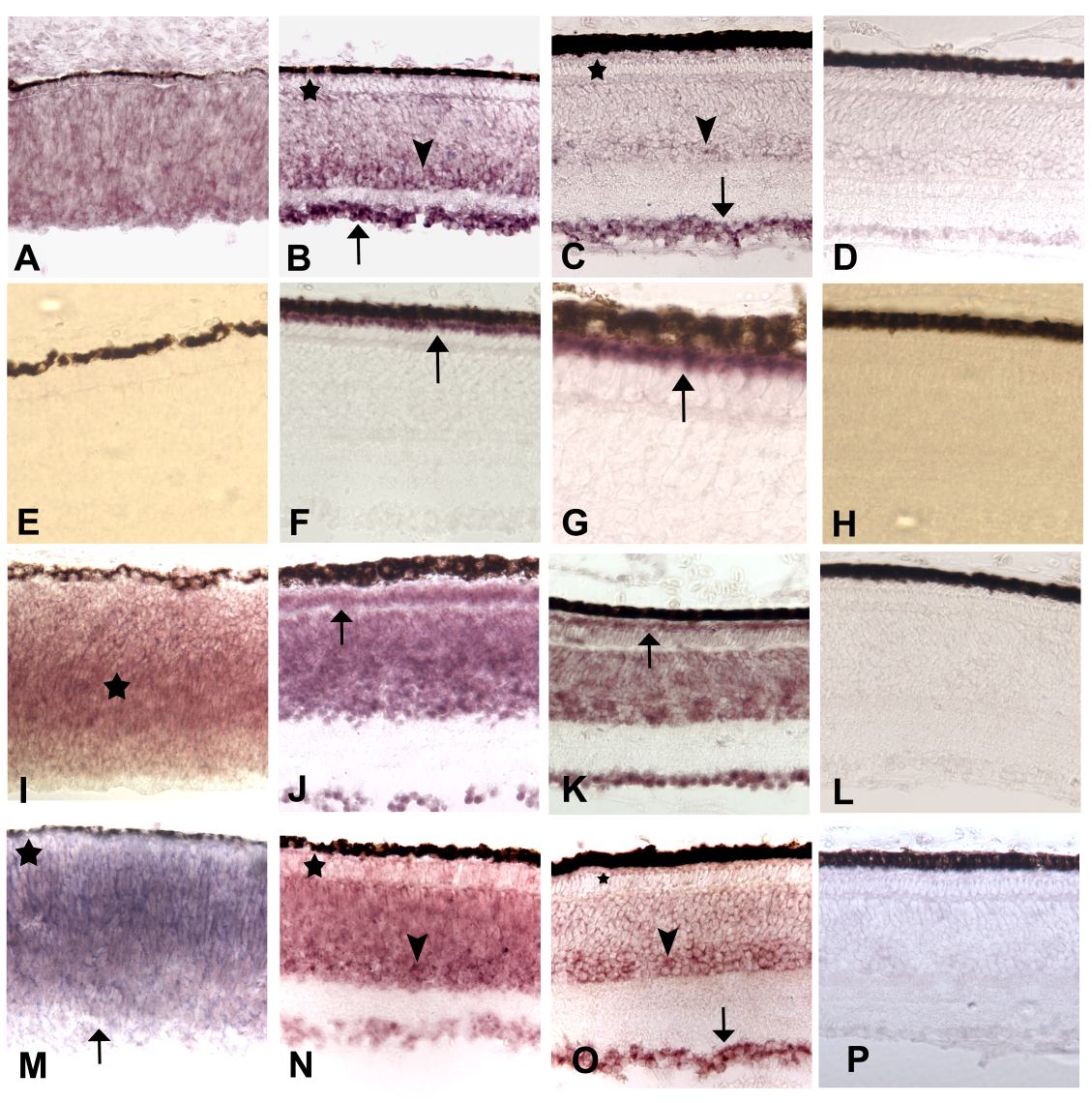![]() Figure 4 of
Hackam, Mol Vis 2003;
9:262-276.
Figure 4 of
Hackam, Mol Vis 2003;
9:262-276.
Figure 4. Developmentally regulated expression patterns of novel chick retina genes
A-E: CRG 150, homologous to human CGI-130. A: ED 5. Light and diffuse expression throughout the retinal neuroepithelium. B: ED 12. Expression predominates in GCL (arrow) and is also observed in the amacrine region of the INL (arrowhead). The ONL is negative (*). C: ED 18. Expression is almost completely restricted to the GCL (arrow). Very infrequent and light signals can be seen in the INL (arrowhead); the photoreceptor layer is negative (*). E-H: CRG177, homologous to human gamma transducin activity polypeptide 2; GNGT2, cone transducin. E: ED 15, no apparent expression. F: ED 18. Expression is restricted to the inner segment of photoreceptor cells (arrow); G: higher magnification of panel F. I-L: CRG220, homologous to the human gene sacsin. I: ED 8. Expression is widespread, although darker in the region of the future INL (*). J and K: ED 15, 18, respectively. Widespread expression. Signals are seen in photoreceptor cell bodies at ED 15 (J, arrow), but appear localized to inner segments on ED 18 (K, arrow). M-P: CRG231, human protein kinase C-binding protein Zeta1. M: ED 8. Expression appears less intense in the putative GCL (arrow) and photoreceptor layer (*). N: ED 15. Signals predominate in the GCL and the INL (arrowhead). Little expression in the ONL (*). O: ED 18. Ganglion cells (arrow) and some cells in the amacrine layer (arrowhead) are clearly positive. Photoreceptor cell bodies are negative (*), but the inner segments are positive. D, H, L, and P: Sense controls for CRG150, 177, 220 and 231, respectively.
